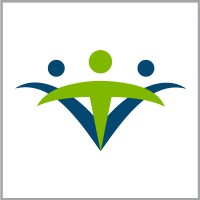Success Stories!
Here is why we are one of the most trusted solutions partners in the US healthcare industry
I turned to Nalashaa Solutions to help out with the Design and Programming. It was the best decision I could have made. The Nalashaa team did an Outstanding job, and the product is now about to launch. Thank You
Michigan, USA
Nalashaa has become a part of our business strategy not only because of the domain expertise they have but also because of the flexibility they have demonstrated and the ease of conducting business with them.
Idaho, USA
Nalashaa has been instrumental in helping us adapt to our changing business needs, with their breadth of technology expertise from Java, Open Source, front-end and back-end technologies coupled with flexible engagement models.
Louisiana, USA

We have been able to task the team with complicated projects that our senior development team did not have the band-width to tackle. Nalashaa team takes their time to understand the project request and does give thought to their project estimates.
USA
They deliver accurate software development project estimations from the business requirements. Code reviews provide visibility into their technical ability to write RPG/Java code that conforms to standards. They have become an indispensable part of our software development team.
USA
We were blown away by their level of responsiveness, and professionalism. We also appreciate their willingness to engage with us during our usual business hours despite the time difference. We know that we are going to see tremendous ROI on our RPA projects once we complete the testing.
USA
I turned to Nalashaa Solutions to help out with the Design and Programming. It was the best decision I could have made. The Nalashaa team did an Outstanding job, and the product is now about to launch. Thank You
Michigan, USA
Nalashaa has become a part of our business strategy not only because of the domain expertise they have but also because of the flexibility they have demonstrated and the ease of conducting business with them.
Idaho, USA
Nalashaa has been instrumental in helping us adapt to our changing business needs, with their breadth of technology expertise from Java, Open Source, front-end and back-end technologies coupled with flexible engagement models.
Louisiana, USA
We have been able to task the team with complicated projects that our senior development team did not have the band-width to tackle. Nalashaa team takes their time to understand the project request and does give thought to their project estimates.
USA
They deliver accurate software development project estimations from the business requirements. Code reviews provide visibility into their technical ability to write RPG/Java code that conforms to standards. They have become an indispensable part of our software development team.
USA
We were blown away by their level of responsiveness, and professionalism. We also appreciate their willingness to engage with us during our usual business hours despite the time difference. We know that we are going to see tremendous ROI on our RPA projects once we complete the testing.
USA
Want to know more? Reach out to Us
We develop impactful healthcare IT solutions for providers that makes a lots difference
Top 7 Features of Pharmacy Inventory Management
A pharmacy inventory system or pharmacy management software stores data and systemizes and controls the pharmacy’s
Implementing RPA bots for hassle free Anesthesia Claim Processing
Our client was a provider organization that offers advanced urology services in Georgia, USA. They have 9 different facilities on
Healthcare IT Challenges and Mitigation Strategies for 2023
In the current world of rapid technological development falling behind is the most common of all. The last two years have
FHIR R4 Integration for a Health EHR Solutions Company
The client, an EHR provider, specializes in mental and behavioral health. Their EHR solution empowers medical
Frequently Asked Questions
1. How can technology help hospitals?
Technology or healthcare provider solutions can aid providers through electronic health records, telemedicine, medical imaging, mobile apps, patient portals, and clinical decision support systems.
2. What software systems do hospitals use?
Hospitals use several software systems to manage different aspects of their operations, including EHRs for patient data management, CDSS for treatment recommendations, PACS for medical imaging, LIS for lab test results management, and PIS for medication management. They also utilize RCM software for billing and financial management, and specialized software for scheduling, inventory management, and patient engagement. The specific software used may vary based on factors like the hospital's size, location, and specific needs.
3. What coding system are used in healthcare?
Healthcare coding systems are used to identify and classify diseases, treatments, and other medical information. They are composed of alphanumeric codes that can be used to standardize the classification of medical information. The most common coding systems include the International Classification of Diseases (ICD) and the Current Procedural Terminology (CPT). In the U.S., the Health Insurance Portability and Accountability Act (HIPAA) requires healthcare organizations to use industry-standard coding systems to facilitate the exchange of information.
4. What are 5 common technological devices used in healthcare?
Common technological devices used in healthcare include smartphones and tablets for mobile access to patient data and medical references, wearable devices for remote patient monitoring and health tracking, infusion pumps for accurate delivery of fluids and medication, medical imaging devices such as X-ray and MRI machines, and electronic health records (EHRs) for managing patient data electronically.